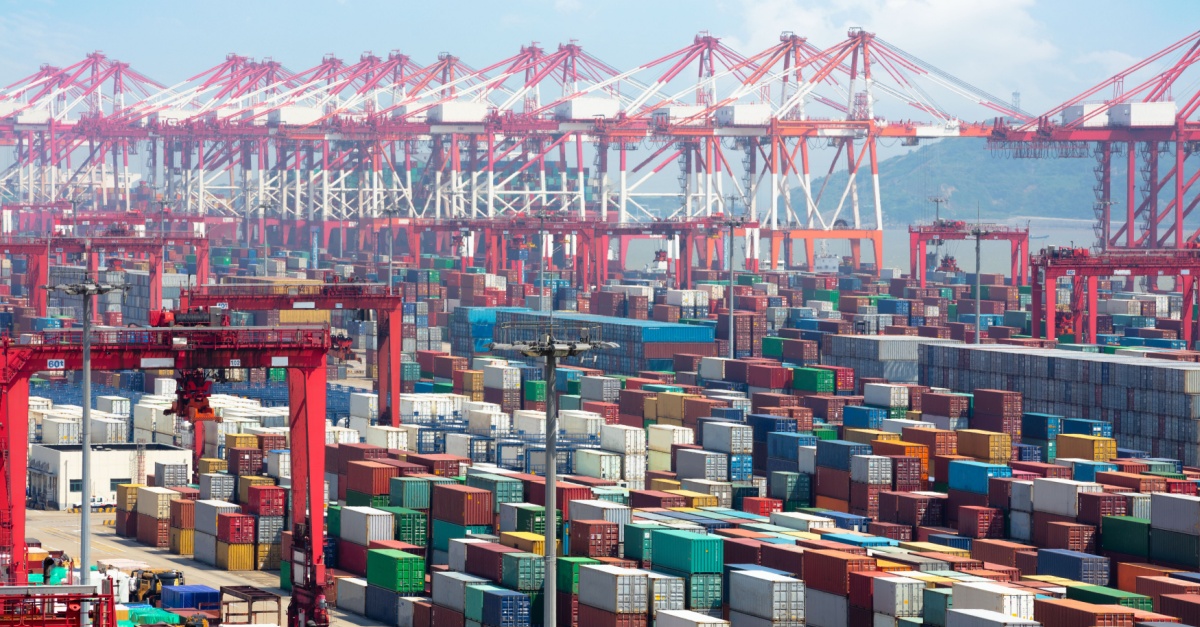
Major recalibrations are underway in the U.S. logistics and retail sector as tariff relief, policy shifts, and new partnerships ripple through supply chains. On the ocean freight side, a rebound in China-U.S. shipping volumes is testing system limits, with a looming capacity crunch that may mirror pandemic-era disruptions.
Meanwhile, although it’s temporary, e-commerce platforms have been afforded some breathing room under the new tariff pause. However, they face long-term uncertainty as momentum builds in Congress to end the de minimis exemption permanently. Walmart is officially passing tariff costs to shoppers, while Amazon is deepening its logistics bench through a revived deal with FedEx.
This month’s newsletter breaks down the key developments every shipper, retailer, and logistics strategist must watch out for.
Following the U.S.-China tariff pause, container bookings from China to the U.S. soared 277%, with volumes jumping from 5,709 TEUs to 21,530 TEUs within days, according to Vizion. Freight forwarder Flexport reported a 35% increase in inquiries, while Maersk offered deep discounts to fill ships.
Despite the booking spike, SONAR data still shows lagging vessel departures, indicating a delayed but accelerating rebound. Analysts caution that the booking surge may test carrier capacity and port infrastructure if the trend holds, especially if tariff relief extends beyond 90 days.
The White House temporarily cut tariffs on small-dollar Chinese imports, dropping rates from 145% to 30% and lowering postal item flat fees to $100. The move gives platforms like Shein and Temu breathing room after the May 2 de minimis exemption rollback caused a steep drop in cross-border sales.
Still, a House committee advanced legislation to eliminate de minimis globally by 2027, citing billions in lost revenue and challenges for U.S. enforcement. The CBP also plans new data rules targeting underreported low-value shipments. Retailers may see a brief price dip, but longer-term compliance requirements and policy tightening are coming fast.
With the U.S. and China agreeing to 90-day tariff reductions (with the new rates at 30% and 10%, respectively), a backlog of Chinese exports is flooding back into the trans-Pacific lane. Bookings rose 29% last week, with current sailings already 85-90% full. However, 34% of capacity had been removed via blank sailings, and carriers now face equipment and vessel shortages.
Repositioning ships back to the trans-Pacific will take at least four weeks, and empty container shortages in China will compound delays. Spot rates, currently around $2,400 per FEU, are expected to spike, with peak season surcharges and premium fees likely. Port executives and forwarders warn that U.S. terminals cannot absorb such a surge without disruption, raising the specter of 2020-style congestion.
Walmart will begin passing through tariff-related price hikes to U.S. shoppers in the coming weeks. Bananas are already up to 54 cents a pound, and other items will follow. CFO John David Rainey called current cost pressures “unprecedented,” even after a temporary tariff rollback lowered rates from 145% to 30%.
Walmart posted a 4.5% Q1 sales increase as cost-conscious consumers sought value. And
CEO Doug McMillon thanked the administration for progress on trade, but urged deeper tariff reductions. While competitors have yet to respond, Walmart is leveraging its private-label offerings and advertising network to offset margin erosion, signaling a strategy to retain price leadership during this volatile trade period.
FedEx will handle large residential deliveries for Amazon under a new multiyear deal signed in February. The move will reestablish ties after a six-year split. However, for Amazon, the partnership gives the company a lower-cost alternative to UPS, which plans to reduce Amazon volume by over 50% by late 2026.
The deal fills operational gaps for both companies while navigating an increasingly capacity-constrained parcel market. FedEx gains stable volume during its network optimization, while Amazon secures support for large, hard-to-handle parcels, which existing carriers have underserved. Analysts view the move positively, as a calculated shift capitalizing on FedEx’s improved logistics model.
Logistics can be quite complex and confusing in some cases. But does it have to be? At Zengistics, we prioritize shippers’ peace of mind above all else. We focus on delivering the highest level of customer service, providing data-driven solutions, practicing proactive communication, and maximizing efficiency to drive scalable growth and provide personalized solutions that optimize your supply chain nationwide.
Sounds like what you’re looking for? At Zengistics, we leverage technology to ensure that and more. We offer:
Zengistics is the smarter option for getting logistics done more efficiently. Connect with us today.